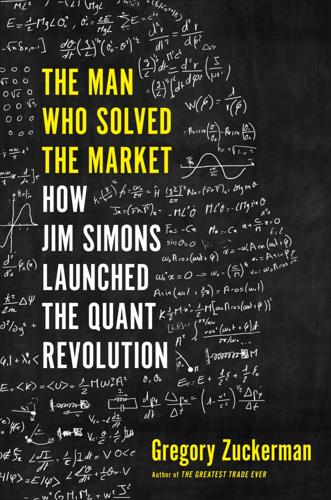
The Man Who Solved the Market: How Jim Simons Launched the Quant Revolution
by
Gregory Zuckerman
Published 5 Nov 2019
They could see the Piggy Basket’s trades and were aware when it made and lost money, but Simons and Baum weren’t sure why the model was making its trading decisions. Maybe a computerized trading model wasn’t the way to go, after all, they decided. In 1980, Hullender quit to go back to school. Leaving college prematurely weighed on him, and he was ashamed he couldn’t help Simons make more progress on his computerized trading system. Hullender couldn’t understand the math Simons and Baum were using, and he was lonely and miserable. Weeks earlier, he had revealed to colleagues that he was gay. They tried to make him comfortable, but the young man felt increasingly out of place.
…
Until now, markets have been driven by human behavior, reflecting the dominant roles played by traders and investors. If machine learning and other computer models become the most influential factors in markets, they may become less predictable and maybe even less stable, since human nature is roughly constant while the nature of this kind of computerized trading can change rapidly. The dangers of computerized trading are generally overstated, however. There are so many varieties of quant investing that it is impossible to generalize about the subject. Some quants employ momentum strategies, so they intensify the selling by other investors in a downtown. But other approaches—including smart beta, factor investing, and style investing—are the largest and fastest-growing investment categories in the quant world.
…
(Source: Medallion annual reports; investors) APPENDIX 2 Returns Comparison Investor Key Fund/Vehicle Period Annualized Returns* Jim Simons Medallion Fund 1988–2018 39.1% George Soros Quantum Fund 1969–2000 32%* Steven Cohen SAC 1992–2003 30% Peter Lynch Magellan Fund 1977–1990 29% Warren Buffett Berkshire Hathaway 1965–2018 20.5%* Ray Dalio Pure Alpha 1991–2018 12% (Source: For Simons, Dalio, Cohen, Soros: reporting; for Buffett: Berkshire Hathaway annual report; for Lynch: Fidelity Investments.) NOTES Introduction 1. “Seed Interview: James Simons,” Seed, September 19, 2006. 2. Gregory Zuckerman, Rachel Levy, Nick Timiraos, and Gunjan Banerji, “Behind the Market Swoon: The Herdlike Behavior of Computerized Trading,” Wall Street Journal, December 25, 2018, https://www.wsj.com/articles/behind-the-market-swoon-the-herdlike-behavior-of-computerized-trading-11545785641. Chapter One 1. D. T. Max, “Jim Simons, the Numbers King,” New Yorker, December 11, 2017, https://www.newyorker.com/magazine/2017/12/18/jim-simons-the-numbers-king. 2. James Simons, “Dr. James Simons, S.
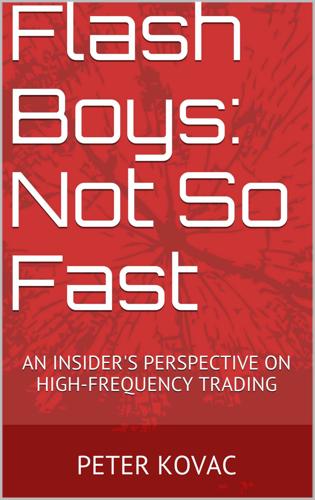
Flash Boys: Not So Fast: An Insider's Perspective on High-Frequency Trading
by
Peter Kovac
Published 10 Dec 2014
Maybe the end is nigh for those villainized by Lewis, and we’ll see them heading to prison in a few months. Or maybe not. We just don’t know at this time, and, unfortunately, Lewis supplies absolutely no hard evidence to help us figure it out – instead we’re stuck with a handful of theories about computerized trading, proposed by a group of outsiders who have never done computerized trading. For a book about the dangers of speed in finance, the book itself seems rushed into print. It’s therefore not surprising, although it is rather unusual, that Lewis’ own “experts” have since gone out of their way to make it clear that they didn’t fact-check the book, and that, in fact, they don’t believe that the market is rigged.[2] Perhaps the most surprising example of speed trumping fact checks comes in a footnote at the end of Chapter 7.
…
Oddly, Katsuyama and his trader colleagues at RBC apparently did expect the world to wait while they received and processed their stock market information. They knew that, for individual investors, stock prices might change between the time that you or I saw the price and when we placed our orders. But they expected that they were different. They expected that their personal Bloomberg terminals and their bank’s custom computerized trading platform not only delivered stock prices to them faster than individual investors, but that it somehow guaranteed that the prices on their screens would remain there until they decided to act on it. In effect, they believed that they were entitled to whatever price they had seen at the gas station yesterday, even if the rest of us weren’t.
…
That extra money vanished into “the spread.” Ten percent of your return disappeared. Poof. This is why the spread is quite important: if it is big, you waste a lot of investment dollars. If you can shrink the spread, your investments earn a lot more. So, how much has the spread shrunk? Lewis tells us that computerized trading has reduced spreads from a “sixteenth of a percentage point” to “one-hundredth of 1 percent.” There are few better techniques to obscure an argument than to make the reader compare fractions. So, let us convert Lewis’ fractions into decimal percentages: the spread dropped from 0.0625% to 0.0100%.
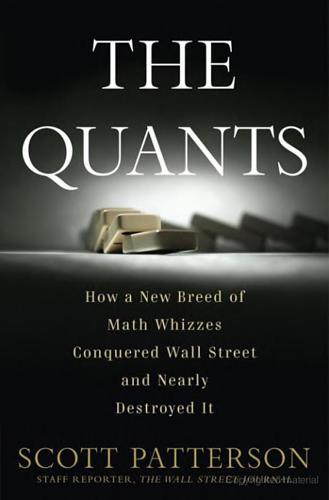
The Quants
by
Scott Patterson
Published 2 Feb 2010
He renamed the group he’d taken over Automated Proprietary Trading, or APT, and moved it to a single forty-foot-long room on the nineteenth floor in Morgan’s Exxon Building headquarters in mid-town Manhattan. Tartaglia added more automation to the system, linking the desk to the New York Stock Exchange’s Super Designated Order Turnaround System, or SuperDOT, which facilitated computerized trades. APT was soon trading so much that at times it accounted for 5 percent of the daily trading volume on the NYSE. The stat arb strategy earned $6 million in the first year Tartaglia ran the group. In 1986, it pulled in an eye-popping $40 million, then $50 million in 1987. The group started to gain legendary status on Wall Street, in part due to its CIA-like secrecy.
…
It is vast, its octopuslike tentacles reaching to the farthest corners of civilization, yet it is also practically invisible. Call it the Money Grid. Innovators such as Ed Thorp, Fischer Black, Robert Merton, Barr Rosenberg, and many others had been early architects of the Money Grid, designing computerized trading strategies that could make money in markets around the world, from Baghdad to Bombay, Shanghai to Singapore. Michael Bloomberg, a former stock trader at Salomon Brothers and eventual mayor of New York City, designed a machine that would allow users to get data on virtually any security in the world in seconds, turning its creator into a billionaire.
…
They worked crazy hours, but it all seemed for naught. Muller was able to glean tidbits of information from other fledgling groups of mathematicians who were trying to crack the market’s code. In 1993, he paid a visit to a little-known group of physicists and scientists running a cutting-edge computerized trading outfit from a small building in Santa Fe, New Mexico. They called themselves Prediction Company, and they were reaching out to Wall Street firms, including Morgan Stanley, for seed capital. Muller’s job was to check them out. A founder of Prediction Company was Doyne Farmer, a tall, ropy physicist and early innovator in an obscure science called chaos theory.
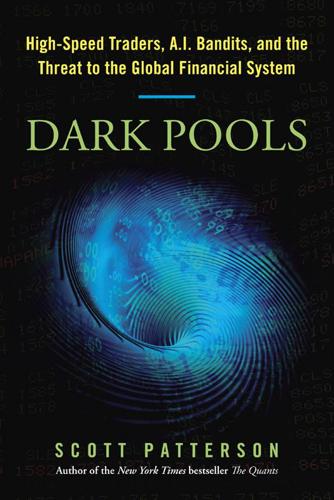
Dark Pools: The Rise of the Machine Traders and the Rigging of the U.S. Stock Market
by
Scott Patterson
Published 11 Jun 2012
Instead, starting in 2001, he’d devoted himself to building a space-age trading platform for Credit Suisse called Advanced Electronic Systems. He was an elite market Plumber, an architect not of trading strategies or moneymaking schemes but of the pipes connecting the various pieces of the market and forming a massive computerized trading grid. Plumbers such as Mathisson had become incredibly powerful in recent years. Knowledge of the blueprints behind the market’s plumbing had become extremely valuable, worth hundreds of millions of dollars to those in the know. The reason: A new breed of trader had emerged who focused on gaming the plumbing itself, exploiting complex loopholes and quirks inside the blueprints like card counters ferreting out weaknesses in a blackjack dealer’s hand.
…
In 2003, Bodek landed at UBS and set up shop at the bank’s massive Stamford headquarters. The Guinness Book of World Records had dubbed UBS’s Stamford trading floor the largest in the world. The size of two football fields at one hundred thousand square feet, it sported fourteen hundred seats and five thousand monitors. It was a computerized trading machine of vast proportions, juggling more than a trillion in assets a day. Bodek’s mandate was to build an options-trading desk that could go head-to-head with the likes of Hull—and he succeeded in spades. His first signal achievement was an entirely new options trading strategy called dynamic sizing.
…
An insiders’ term for the market itself was a “central limit order book”—a CLOB in the industry jargon. No less than USA Today told investors that “the best, easiest and free way for investors to protect themselves in this era of electronic trading is to use so-called limit orders” that safeguard against “short-term disruptions that might be caused by computerized trading.” But a representative for a U.S. exchange had just told Bodek not to use limit orders, which were getting picked off by high-speed traders like ducks in a pond. BODEK thought practically nonstop for days about what the exchange representative had told him that night at the New York party.
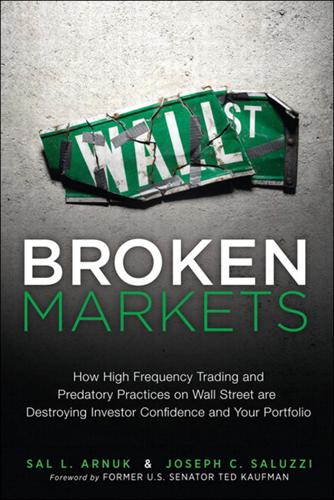
Broken Markets: How High Frequency Trading and Predatory Practices on Wall Street Are Destroying Investor Confidence and Your Portfolio
by
Sal Arnuk
and
Joseph Saluzzi
Published 21 May 2012
On Monday morning, Oct. 11, 2010, the phones in Credit Suisse’s Advanced Execution Services department were ringing more than usual. On the other end were anxious customers asking the big broker what it was doing to protect their orders from predatory black-box traders. They had all watched 60 Minutes the night before, when the popular television program explored the world of computerized trading and the role of high-frequency traders. Reporter Steve Kroft interviewed Joe Saluzzi, co-head of agency brokerage Themis Trading, who told Kroft that high-frequency traders were using their superior firepower-i.e., speed-to push prices up or down, to the disadvantage of the institutional investor.
…
As nonprofit companies, they said they were in business to serve investors and publicly listed companies, but critics accused them of using their market power to fend off competitors, keep trading costs high, and protect their owner-members. In 1997, alternative markets called electronic crossing networks, or ECNs, sprang up, encouraged by the SEC to compete with the established exchanges. The new ECNs were for-profit companies that, unlike the NYSE and NASDAQ, relied exclusively on computerized trading to do business. They also introduced a low-cost business model that was relatively new to the United States. Unlike NASDAQ and the NYSE, the ECNs didn’t have middlemen called “specialists” or “market makers,” regulated firms that were obligated to be in the market at all times, ready to buy and sell stock with investors.
…
Reformers judged that if market makers were cheating their investor customers, then investors should just trade directly with one another, bypassing the market makers altogether. ECNs offered that service. Investors don’t always come to the market at the same time, however. A buyer might have to wait quite a while for a seller to show up. The ECNs quickly discovered they too needed middlemen to provide liquidity to their markets. With an emphasis on blazing-fast computerized trading, and with an emerging technology base that supported vast amounts of computer transactions, in an ironic twist the ECNs soon became a food plot for a new kind of firm, one that looked like a middleman but wasn’t regulated like one. Sharp-eyed traders figured out there was a good business in being a middleman on the ECNs if they didn’t have to obey the same rules as the NYSE specialists or the NASDAQ market makers, and they didn’t.
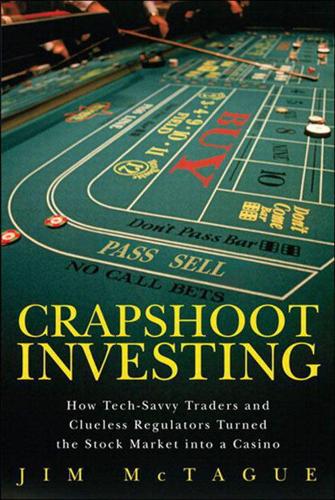
Crapshoot Investing: How Tech-Savvy Traders and Clueless Regulators Turned the Stock Market Into a Casino
by
Jim McTague
Published 1 Mar 2011
Arnuk started attending the Stern School of Business at NYU part time; and Saluzzi resigned a few months later to attend the Kenan-Flagler Business School of the University of North Carolina. Arnuk graduated in 1991, and Saluzzi in 1993. Arnuk began working for Instinet, a global brokerage firm that specialized in computerized trading. He recruited Saluzzi for a job there. They were neighbors at this point. Both men had married and secured homes in Bay Ridge. In 2002, Saluzzi and Arnuk got tired of the rat race and decided to move to New Jersey and start their own company. Arnuk was the first to go, and he convinced Saluzzi to join him in a trading venture.
…
Before the appearance of the Europeans on U.S. soil, there had been four major commodities exchanges and several smaller, specialized, regional exchanges. All of them had been owned mutually by their trading members. The largest exchanges were the Chicago Mercantile Exchange (CME); the Chicago Board of Trade (CBOT); the New York Mercantile Exchange; and the New York Board of Trade. Throughout the 1990s when computerized trading began to spread owing to the introduction of more sophisticated personal computers, these exchanges resisted the transformation to electronic trading simply because that threatened the livelihood of their owners. The CBOT was the oldest exchange, established in 1847. At its founding, it specialized in wheat and oat futures.
…
SECs investigators also felt the need to acquire secondary information in the form of testimony and interviews from market participants to flesh out the story told by the tape. The SEC picked up the pace of its information gathering within a few weeks, inviting a roundtable of experts on high-frequency trading (HFT) to its headquarters on June 2 for a public discussion of the pluses and minuses of computerized trading. Schapiro had urged Kaufman to watch her, and he was—like a hawk. He didn’t like what he was seeing. A spy had leaked him a list of the panel’s participants in advance, and it was laughably lopsided in favor of high-frequency traders. They were to occupy six of seven seats on the stage. The Senator could hardly believe his eyes.
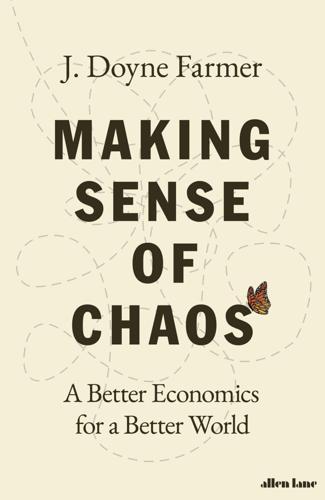
Making Sense of Chaos: A Better Economics for a Better World
by
J. Doyne Farmer
Published 24 Apr 2024
As discussed in Chapter 6, perfect rationality provides a useful model for understanding human behavior when the problems are sufficiently simple – options pricing or tic-tac-toe are examples. But to explain market malfunctions, which generally occur in complicated and unforeseen situations, specialization and bounded rationality matter, and the basic principles of evolution and ecology provide a better starting point than the efficient-markets hypothesis. The proliferation of computerized trading strategies, like ours at Prediction Company, underscores the bounded rationality of agents in the market. While our strategies were constructed through a careful and scientific search carried out by intelligent people, the final code that was implemented to trade our strategies was very simple.
…
It consisted of classic stimulus/response instructions, of the form ‘If conditions A, B and C are met, then buy (or sell) the following assets.’ Ants are far more intelligent than our code was. It’s difficult to estimate precisely how much stock trading is now done by computers, but most estimates put it well in excess of 50 per cent. Computerized trading is far from rational, but it’s used in many domains because it’s more successful than the trading done by human beings, not to mention cheaper and quicker. If we were fully rational, we would have foreseen the problems that program trading or mortgage-backed securities would cause.1 The theory of market ecology My musings about market anthropology and our experience measuring market impact led me to a theory of market ecology.2 In my spare time at Prediction Company I began scribbling and solving equations, which eventually led to a paper titled ‘Market Force, Ecology and Evolution’, which I finished and posted online in 1998.
…
Brian 5, 170–71 artificial intelligence 1, 3, 11, 42, 65, 114, 183 Arvizu, Dan 235 Asano, Yuki 124–5, 135 Asian financial crisis (1997) 195, 219, 232 ‘as-if’/’as-is’ reasoning 8, 10, 112 aspiration-level adaptation 110 assets accounting and 47 agent-based models and 7, 115 balance sheets and 45–6 behavioral macroeconomics and 103 buying underpriced 7, 115, 202 contracts and 141 derivative pricing and 150 leverage and 192, 193, 196, 197, 199, 200, 204–5, 208, 210, 211–12, 211 malfunctions and 185 market impact and 150, 151 portfolio choice and 111 prices and 181, 185 quantitative easing programs and 259 risk management and 204–5, 208, 210, 211–12, 211 attractors 30–37, 32, 182, 206 chaotic attractor 31–2, 34, 36, 206 fixed-point attractor 30–31, 33, 34, 36–7, 182 limit-cycle attractor 34 Lorenz attractor 32, 34 strange attractor 30–31, 33, 35 austerity 22, 105, 254 Austria xviii, 258 automation 1, 12, 20, 65, 68–72 Axtell, Rob 82, 274 Aymanns, Christoph xi, xii, 207–8, 210, 213–14, 215 Bachelier, Louis 144, 165 backward-looking expectations 83–4 Bacry, Emmanuel 216 Bagley, Richard 51 balance sheets 45–7, 51, 141, 188, 191, 260, 261–2 Bank for International Settlements 213 Bank of America 175–6, 189 Bank of Canada 258 Bank of England xviii, 89, 188, 216 Bank of Hungary 90 Bank of South Africa 216 baseball, gaze heuristic and 109 Basel Committee on Banking Supervision 204–16 Basel I 204, 214–15 Basel II 205, 206, 208, 209, 210, 213, 214–15 Basel III 215 Basel IV 215 Basel leverage-cycle model xii, 204–16, 211, 219 Baumol, William 62 Beaufort, Francis 224 beavers, hunting of 186–7 behavioral economics 5–6, 9, 17, 40, 46, 47, 93, 103–5, 106, 108, 114, 116, 120, 168 Beinhocker, Eric: The Origin of Wealth 63–4 Bergmann, Barbara 1 Beveridge curve xi, 69, 69, 70–71 ‘Beyond Equilibrium and Efficiency’ conference (2000) 168–9 bid-ask spread 154 biology 4, 8, 16, 21, 51, 54, 175–90, 239, 278 market ecology see ecology, market understanding the economy and concepts from 43–5 BiosGroup 187–8 Black, Fischer 150, 169 Black Monday stock market crash (1987) 161–4, 165, 166, 167, 168, 187 Boeing 73 Bohr, Niels 23, 24 Boldrin, Michele 37 bonds 111, 140, 150, 171, 172, 185, 191, 194–7, 199, 219, 259 Boston University 56, 57, 153 Bouchaud, Jean-Philippe 155 bounded rationality 116–20, 118n, 119, 173 computerized trading strategies and 178 defined 108–9 endogenous business cycles and 124, 128, 129 game theory and 135 market impact and 151, 155–6 risk management and 206 wilderness of xi, 116–20, 118n, 119, 124, 151, 155–6 Boyle’s Law 23–4 brain artificial 171, 172 brainwaves, chaos and 38 cerebral cortex 277, 278 as complex system 5, 20–21 gut brain 139–40, 142, 277 prediction and 23 wilderness of bounded rationality and 118n, 119 Brin, Sergey 49 British Met (Meteorological) Office 224 Brock, William ‘Buz’ 38, 39, 172–3, 200 broker-dealers 207 Brown University 82 Buffet, Warren 115, 139 business cycles Beveridge curve and 71 bounded rationality and creating endogenous business cycles 124–8, 126, 135 chaos and 28–9, 37, 40 creative destruction and 279–80 endogenous business cycle from a simple agent-based model xi, 124–8, 126, 135 inflation and 257, 258 nonlinear behavior and 76, 78 spontaneous emergence of 123, 124–8, 126, 135, 258 Calchas (mythical character) 22 Calinescu, Ani 184 call option 150 Calvet, Laurent 218 Calvo, Guillermo 101–2 ‘Carbon Dioxide and Climate: A Scientific Assessment’ report (1979) 230 Carnegie Mellon 98 Carville, James 123 Case-Shiller index 88, 89n Cass, David 100 census data 6, 67, 80, 81, 87, 112, 115 Center for Nonlinear Studies at Los Alamos 16, 41 change, economy and 8, 123–35 business cycles see business cycles chaotic dynamics and 128–35 internally and externally driven causes 8, 123 markets and 162, 164–70, 165, 167 chaos xviii, 24 Basel leverage-cycle model and 212, 213, 217 business cycles and 28–36 chaotic attractor xi, 30–36, 31, 206 defined 30–36, 32 economy as chaotic 36–41, 128 financial crisis (2008) and 206 fluid turbulence and 218–19 game theory and 128–35 sensitive dependence on initial conditions and 25, 31–4, 40, 212 simple chaos and complicated chaos 37, 38–40, 134, 143, 217, 218–19 stock market and 129, 135, 143 weather and 225, 226, 228, 229 Charney, Jule 227, 230 ChatGPT 114 Cherkashin, Dmitriy 159 chess 113, 132 Chicago school of economics 106–7 child-care workers 70 China, trophic structure of the U.S. and Chinese economies, comparison of xi, 59–63, 59 classifier system 171–2 climate change 1, 3, 12, 57, 65–6, 107, 221–54, 255, 263 Climate Policy Laboratory see Climate Policy Laboratory conscious civilization and 277–80 Dynamic Integrated Climate Economy (DICE) 235–6, 246–7 economic predictions and predictions of weather and climate 221–69 green-energy transition 65–72, 222, 234–7, 245–54, 246, 250, 263–8, 279 historical global cost and deployment of energy technologies 245–54, 246 predicting climate 229–31 solar photovoltaic modules see solar photovoltaic power sustainable growth 267–9 technological progress and 234–54, 237, 243, 246, 250 weather predicting and 223–9 Climate Policy Laboratory xii, 264–7, 264, 280 Agriculture and Land Use Module 264, 266 Energy System Module 264, 265–6 Government and International Relations Module 264, 266–7 Green Industrial Strategy Module 264, 266 Households Module 264, 266 Innovation and Technological Change Module 264, 266 Investment and Financial Stability Module 264, 266 origins of 264–5 The Production Network Module 264, 265 closed-form solutions 76–7 clustered volatility 219 credit and 173 defined 134, 164–5 fluid turbulence and 217, 218 leverage and 199–202, 215 news and xi, 164–74, 165, 167, 199–202, 215 price movements and xi, 164–74, 165, 167 quantitative predictions and models of 173–4 risk management and 204–5 Santa Fe Artificial Stock Market model and 170–73, 184–5, 200 trend-following and 200 coal miners 65 competition 42, 44, 67, 70 biological 177–82, 185, 189 game theory and 129, 133–5 complete network 68 complex systems xix adaptive complex systems 21, 43 chaos and see chaos complicated 35–6 defined 19–21 economy as 16, 42–7 financial system as 142 networks and 48–50 nonlinearity and 75–6, 77 science of 4–5, 19–21, 26, 29–30 self-organization and 48 ‘The Economy as an Evolving Complex System’ conference, Santa Fe Institute (1987) and origins of 16–17, 161, 166 complexity economics agent-based models and see agent-based models ‘as-if’ and ‘as-is’ reasoning and see ‘as-if‘/’as-is’ reasoning bounded rationality and see bounded rationality chaos and see chaos climate change and see climate change complex systems and see complex systems data and see data defined xviii–xix, 4–5, 19 ecology and see ecology equilibrium and see equilibrium hard problems, ability to solve 8–9 institutional support 13–14, 274–6 Leontief and emergence of 54–7 markets and see markets methods and infrastructure, developing 273–4 standard economic theory and see standard economic theory tools 6–7, 11 verisimilitude and see verisimilitude Complexity Science Hub, Vienna 198 complicated chaos 35–6, 38–40, 218–19 complicated complex systems 35–6 Computable General Equilibrium models 102 Congressional Budget Office, US xiv consciousness 5, 20, 21, 76, 278 conscious civilization 277–81 contracts 46, 140–41, 191, 196 convergence trading 158, 194 convergent evolution 188–9 counterparty identifiers 184, 187 COVID-19 pandemic agent-based models and 75, 277 business cycles and 8, 29, 262 model of epidemics’ effect on sickness and the economy and xi, 78–80, 79 Oxford model predicts economy response to xiii–xviii, 12, 50, 78, 263 Cowan, George 20 creative destruction 43, 279–80 credit agent-based models and 173 credit crisis 82 financial crisis (2008) and see global financial crisis (2008) financial turbulence and 191–220 lending and see lending leverage and see leverage risk management and see risk management shadow banking system and 142 CRISIS (Complexity Research Initiative for Systemic InStabilities) 208 Crutchfield, Jim 35 Curie, Marie 270 Cutler, David 166, 167, 168, 169, 170, 172 cybernetics 20 damage function 236, 249 Daniels, Marcus 154 dark matter/dark energy 271 Darley, Vince 187–8 Darwin, Charles 176, 177, 223 data collecting better 270–73 microdata 72, 87, 229 Dawid, Herbert 257 Day, Richard 37 decimalization 187–8 decision making 7, 11, 46, 63, 74, 83, 97, 99, 103, 115, 118n, 135, 141, 266–7 default 8–9, 49, 85, 90, 193, 195, 199, 200, 201, 202, 203, 232 degrees of freedom 38–40, 217, 219 Delour, Jean 216 demand curves 15, 96, 152 equilibrium and 8, 15 housing 87–8, 95–6, 110 inverted demand functions 200–201 labor 65–8, 71–2, 101 market ecology and 182 market impact function and 150–56 Nash equilibrium and 130 shocks xiii, xiv, xv, xvi, xvii, 262–3 Standard models in economics and 85 tatonnement and 15–16 World Energy Model and 249 Wright’s Law and 244 Department of Energy National Renewable Energy Laboratory, US 235 Department of Labor, US xiv derivatives 179, 187 derivative pricing 150, 152 Descartes, René 153 descent, evolution and 176 D.
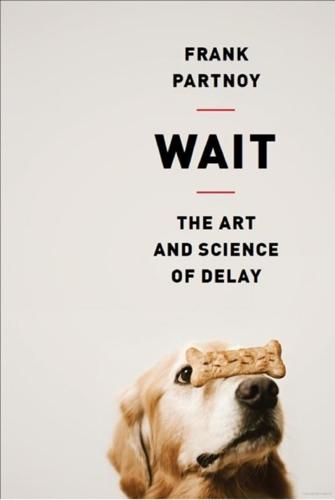
Wait: The Art and Science of Delay
by
Frank Partnoy
Published 15 Jan 2012
High-speed trading can be a kind of temporal arms race, like a superfast version of holiday shopping. If you aren’t among the first customers in line on Black Friday for the post-Thanksgiving sale, by the time you get in the door the best bargains will be gone. High-frequency traders say this kind of superfast computerized trading is good for all investors because we can buy or sell whenever we want at the lowest possible cost. Others argue that the increasing speed of trading is not only socially wasteful but dangerous. Critics believe we have been fortunate to avoid a market crash caused by high-frequency trading and that someday we will not be so lucky.
…
Is it better to let computers trade on their own at preconscious speeds, or do we need conscious human intervention? At 2:32 PM on May 6, 2010, an employee of Waddell & Reed, a mutual fund company headquartered about a mile from my childhood home in Overland Park, Kansas, clicked Start on a computerized trading software program.5 The firm’s goal was to reduce its exposure to $4.1 billion of stocks it owned by selling something called “E-Mini” futures contracts. The E-Mini is based on the Standard & Poor’s 500 Index of top stocks, except that it is traded in small amounts (hence “Mini”), and it goes through an electronic trading platform instead of the frenzied “open outcry” method still used for other futures contracts (hence “E-”).
…
During the first minute, as they switched sides, trading volume increased and Waddell & Reed’s automated program responded by selling a larger number of E-Mini contracts. During the second minute, more traders sold and so did the automated program. During the third and fourth minutes, everyone sold even more, in a kind of high-speed computerized trading death spiral. By 2:45 PM, trading volume was exploding and the E-Mini futures contract was collapsing. Its price had fallen 5 percent in just thirteen minutes. The high-frequency computer programs were a big chunk of the market at this time. During one fourteen-second period, high-frequency traders accounted for 27,000 E-Mini contracts, about half of the total trading volume.
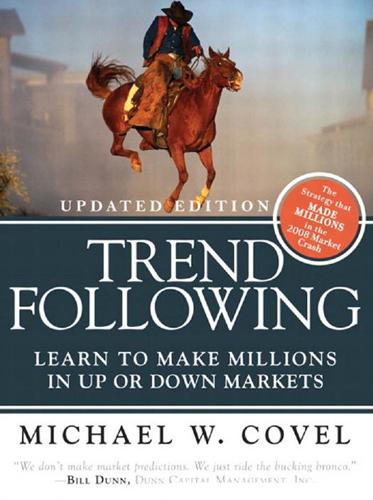
Trend Following: How Great Traders Make Millions in Up or Down Markets
by
Michael W. Covel
Published 19 Mar 2007
[Dunn determined] position size by risking 2 percent to 6 percent of equity under management on each trade.”18 It’s not uncommon for long-term trend followers to have trades in place for well over a year, hence the term “long.” If you want day trading insanity or the feeling of exhilaration in Las Vegas, Dunn is not the person you should choose as a trading role model. Following his computerized trading system, Dunn holds longterm positions in major trends typically trading only two to five times per year in each market. The original system was and still is a reversal system, whereby it is always in the market, either long or Chapter 2 • Great Trend Followers short. Dunn says he’s held winning positions for as long as a year and half.19 Early on Dunn needed more capital to execute his particular plan of trading attack.
…
He earned his Bachelor of Science from MIT in 1969 and by 1972 had embarked on the trading career he pursues to this day—investing for his own account and the accounts of a few select others. He was self-taught, but influenced in his career by Amos Hostetter and Richard Donchian. Early in his career, Seykota was hired by a major broker. He conceived and developed the first commercial computerized trading system for client money in the futures markets. According to Jack Schwager’s Market Wizards, he increased one client’s account from $5,000 to $15,000,000 in just 12 years. For the past few years, Seykota has worked from a home office in Incline Village, Nevada. His trading is largely confined to the few minutes it takes to run his internally written computer program, which generates trading signals for the next day.
…
There may have been other reasons for Dennis’ problems beyond pressure and expectations from clients. For example, Dennis said he could not program a computer if it walked in and bit him. He outsourced his programming, as many traders do. But there is something to be said about knowing how everything under the hood works. Ed Seykota is generally acknowledged to have programmed the first computerized trading system. Bill Dunn and his staff wrote their original programming for their trading systems. In other words, there may be value in learning all you can about every aspect of trading if you are going to trade a trend following trading system. Key Points • Dennis: “Trading was even more teachable than I imagined.
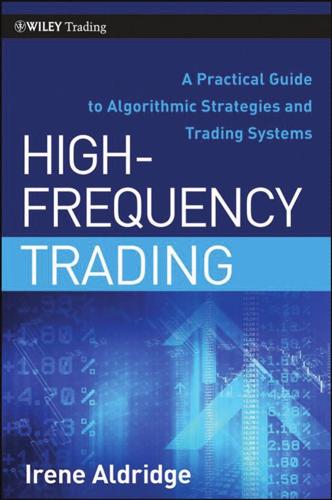
High-Frequency Trading: A Practical Guide to Algorithmic Strategies and Trading Systems
by
Irene Aldridge
Published 1 Dec 2009
The cost of traditional trading remains fairly constant through time. With the exception of trader “burn-outs” necessitating hiring and training new trader staff, costs of staffing the traditional trading desk do not change. Developing computerized trading systems, however, requires an up-front investment that is costly in terms of labor and time. One successful trading system takes on average 18 months to develop. The costs of computerized trading decline as the system moves into production, ultimately requiring a small support staff that typically includes a dedicated systems engineer and a performance monitoring agent. Both the systems engineer and a monitoring agent can be responsible for several trading systems simultaneously, driving the costs closer to zero. 28 HIGH-FREQUENCY TRADING Cost High-frequency trading Traditional trading Time in development and use FIGURE 3.3 The economics of high-frequency versus traditional trading businesses.
…
Whoever was able to run a quant model the fastest was the first to identify and trade upon a market inefficiency and was the one to capture the biggest gain. To increase trading speed, traders began to rely on fast computers to make and execute trading decisions. Technological progress enabled exchanges to adapt to the new technology-driven culture and offer docking convenient for trading. Computerized trading became known as “systematic trading” after the computer systems that processed run-time data and made and executed buy-and-sell decisions. High-frequency trading developed in the 1990s in response to advances in computer technology and the adoption of the new technology by the exchanges. From the original rudimentary order processing to the current state-of-the-art all-inclusive trading systems, high-frequency trading has evolved into a billion-dollar industry.
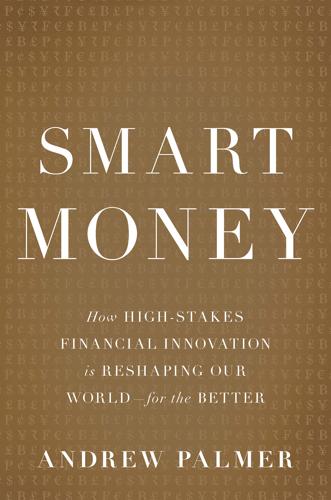
Smart Money: How High-Stakes Financial Innovation Is Reshaping Our WorldÑFor the Better
by
Andrew Palmer
Published 13 Apr 2015
Despite making a lot of deals, the capital they kept invested in the company was low on average, which suggests they were making their money by trading in the shares. By providing liquidity, the Raphoens made it easier for people to buy and sell, which in turn made the market more attractive to financial traders and increased the volume of transactions on the exchange. The Raphoens would not recognize the form of their modern counterparts—computerized trading firms that zip in and out of holdings at staggering speeds—but their function would be familiar enough. *** THE INSURANCE MARKET also took a big leap forward in the seventeenth century, thanks to the forgetfulness of a London baker named Thomas Farynor. His failure to properly put out the ashes of a fire at his shop on Pudding Lane led to a blaze that started in the early hours of September 2, 1666, and four days later had spread across the center of the city and destroyed 13,200 homes.
…
Institutional investors may now complain about being forced into “dark pools” (off-exchange venues where they can deal anonymously) to avoid the high-frequency traders, but these pools existed before HFTs and were set up in part to avoid being scalped by brokers or floor traders. Indeed, in the very early days of automation, it was the machines that needed protection from the humans. One of the pioneers of computerized trading was a firm called the Prediction Company, which was founded in 1991 in Santa Fe, New Mexico, by a couple of chaos physicists called Norman Packard and Doyne Farmer. Packard and Farmer had already worked together on a scheme to beat the house at roulette using a toe-operated computer; the Prediction Company was an equally idiosyncratic attempt to take on the biggest casino of all, the stock market, by using physics-based models to predict short-term price movements.
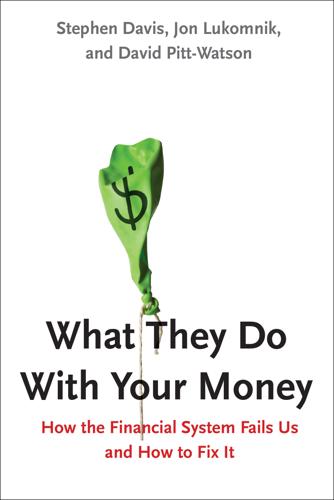
What They Do With Your Money: How the Financial System Fails Us, and How to Fix It
by
Stephen Davis
,
Jon Lukomnik
and
David Pitt-Watson
Published 30 Apr 2016
Because their electronic signals literally have less distance to travel, they can react to developments and leap in before everyone else’s buy and sell requests. High-frequency traders can buy and sell the ownership right in a company one thousand times in the time it takes you to blink. To be clear, this activity is not marginal to our capital markets. The World Federation of Exchanges notes that in 2012, computerized trading programs accounted for an estimated 51 percent of shares traded in the United States and 39 percent of shares traded in Europe.6 Thanks to the rise of these high-frequency traders and the glorification of day trading, the activity in buying and selling companies has exploded. That changed context pervades—some would say perverts—the thinking of virtually every market participant.
…
When former SEC chair Elisse Walter was asked about the SEC’s role in facilitating high-frequency trading, she admitted that the regulatory response had been “inconsistent.”64 ENCOURAGE NEW TRADING PLATFORMS THAT PROTECT INVESTORS Some entrepreneurs are not waiting for regulators to tackle the high-frequency trading issue but are creating a new exchange, called the IEX, that will build a 350 microsecond delay into its computerized trading so as to frustrate high-frequency traders. Nor will the IEX pay the rebates other exchanges pay to high-frequency traders to get them to boost volumes and liquidity. The IEX is backed by mutual fund companies and other longer-term investors, and the hope is that it will attract enough investors frustrated with the advantages given to high-frequency traders to provide adequate liquidity.65 It may or may not work, but the basic idea, to find a venue where longer-term investors can be treated fairly, will no doubt be a driving force in other innovations.
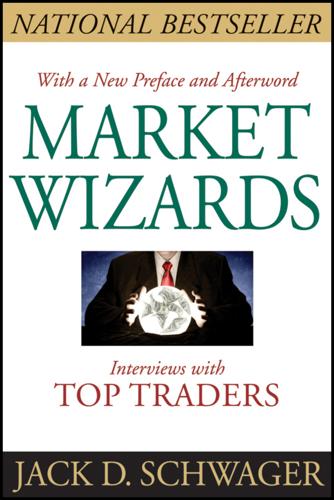
Market Wizards: Interviews With Top Traders
by
Jack D. Schwager
Published 7 Feb 2012
No, but since the company had just gone through a major shake-up and most of the management had been fired, I figured there wouldn’t be very much of a bureaucracy to interfere with my use of the computer. What became of your work on computerized trading systems? Eventually, management got interested in using my research results for managing money. I developed the first large-scale commercial computerized trading system. What do you mean by large scale? The program was marketed by several hundred agents of the firm, and the equity under management was several million dollars—a large amount of money in the early 1970s.
…
Ed Seykota Everybody Gets What They Want Although completely unknown, not only to the public, but to most of the financial community as well, Ed Seykota’s achievements must certainly rank him as one of the best traders of our time. In the early 1970s, Seykota was hired by a major brokerage firm. He conceived and developed the first commercial computerized trading system for managing clients’ money in the futures markets. His system proved quite profitable, but interference and second-guessing by management significantly impeded its performance. This experience provided the catalyst for Seykota going out on his own. In the ensuing years, Seykota applied his systematized approach to trading a handful of accounts and his own money.

New Market Wizards: Conversations With America's Top Traders
by
Jack D. Schwager
Published 28 Jan 1994
How sharply a trend slopes on a chart is often a psychological consideration in making a trade. If you fall prey to this influence, you’re letting the chart maker’s practical and aesthetic considerations impinge on your trading. Any trend can be made to look either gentle or steep by adjusting the price scale. This example also highlights one of the advantages of computerized trading. A computer ignores all but what it is instructed not to ignore. If you wanted your computer system to be cognizant of slope, you would have to program this feature into it. At that point, it would become abundantly clear that the slope value depends directly on the choice of units and scales for the time and price axes.
…
THE MARKETS ARE AN EXPENSIVE PLACE TO LOOK FOR EXCITEMENT Excitement has a lot to do with the image of trading but nothing to do with success in trading (except in an inverse sense). In Market Wizards, 476 / The New Market Wizard Larry Hite described his conversation with a friend who couldn’t understand his absolute adherence to a computerized trading system. His friend asked, “Larry, how can you trade the way you do. Isn’t it boring?” Larry replied, “I don’t trade for excitement; 1 trade to win.” This passage came to mind when Faulkner described the trader who blew out because he found it too boring to be trading in the way that produced profits. 36.
…
I just couldn’t do anything right. When I was right about the direction of the market, my buy recommendation was just a bit too low (or my sell price too high). When I got in and the direction was right, I got stopped out—frequently within a few ticks of the extreme of the reaction. I responded by developing a range of computerized trading programs and technical indicators, thereby widely diversifying the trading Market Wiz(ar)dom / 477 advice I provided to the firm. I still made my day-to-day subjective calls on the market, but everything was no longer riding on the accuracy of these recommendations. By widely diversifying the trading-related advice and information, and transferring much of this load to mechanical approaches, I was able to greatly diminish a source of personal stress—and improve the quality of the research product in the process. 38.
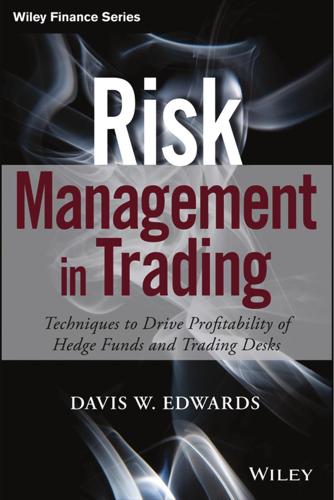
Risk Management in Trading
by
Davis Edwards
Published 10 Jul 2014
A combination of Strategy A and B, with a larger investment in Strategy A than Strategy B What is a way to reduce trading risk? A. Require all trades to be recorded with a trading repository that ensures that trades are accurately recorded on the day of entry. B. A system to prevent unusually large computerized trades without approval by a human. C. Perform suitability checks on trades, like credit risk approval and restricted lists, to ensure that approved instruments are being traded in approved sizes. D. All are ways to reduce risk. Which answer best describes the term slippage in the context of a trading strategy?
…
In other words, an equally weighted combination of Strategy A and Strategy B will have a positive return with no volatility. 5. What is a way to reduce trading risk? A. Require all trades to be recorded with a trading repository that ensures that trades are accurately recorded on the day of entry. B. A system to prevent unusually large computerized trades without approval by a human. C. Perform suitability checks on trades, like credit risk approval and restricted lists, to ensure that approved instruments are being traded in approved sizes. D. All are ways to reduce risk. Correct Answer: D Explanation: All are examples of ways that computer systems can reduce the risk of trading. 6.
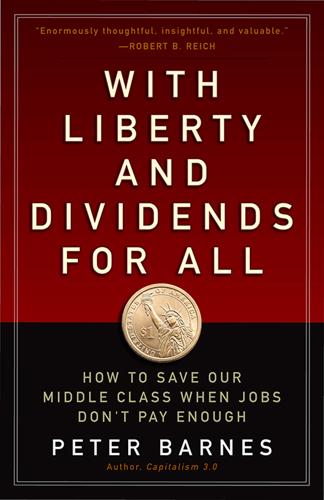
With Liberty and Dividends for All: How to Save Our Middle Class When Jobs Don't Pay Enough
by
Peter Barnes
Published 31 Jul 2014
By making complex products so cheap that millions could afford to buy them, it vastly increased the number of workers needed. On top of that, it enabled large, automated companies to pay decent wages. This was the beginning of industrial America’s mass middle class. Today, automation is displacing workers again. ATMs replace human tellers, e-mail replaces postal workers, computerized trading replaces floor traders, and so on. The result is an American workforce that’s splitting into well-paid elites at the top and low-paid service workers at the bottom, with few decently paid punters in the middle. Deunionization. An affluent economy is a prerequisite for a large middle class but by no means a guarantee.
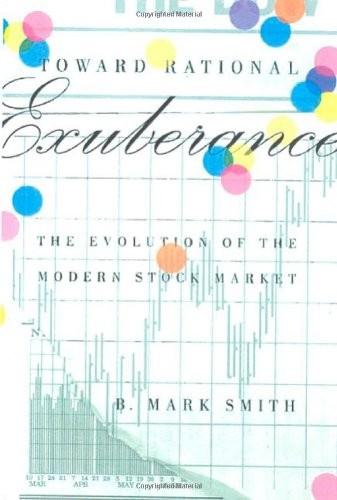
Toward Rational Exuberance: The Evolution of the Modern Stock Market
by
B. Mark Smith
Published 1 Jan 2001
The dictionary definition of “arbitrage” is “the purchase of securities in one market for resale on another market in order to profit from a price discrepancy.” Index arbitrageurs buy all the stocks that make up an index and simultaneously sell the index futures when the price of the futures is too high, or do the reverse when the price of the futures is too low. To accomplish this quickly for a large number of stocks, computerized trading was necessary—hence the oft-used phrase “computer trading” (or “program trading”). It was assumed that index arbitrage would always keep the futures prices in line with cash prices. According to Leland, portfolio insurance was ideal for pension funds that needed to meet certain defined obligations but could afford to take more risk once the ability to meet those obligations was guaranteed.
…
The stock market began to trend lower in September, with the pace of the decline accelerating in early October. Concerns were expressed about the potential impact on the market of new program trading systems (such as the index arbitrage discussed in chapter 14). Writing about the early October market slide, The Wall Street Journal took note of these sentiments, referring to “fears that some computerized trading techniques, such as portfolio insurance, could deal a nasty blow to an already fragile market.” Things quickly got worse. The week ending Friday, October 16, witnessed a steep decline in prices, with the biggest drop occurring at the end of the week. On Friday the Dow Industrials fell more than 100 points, or 4.6%, the sixth largest percentage loss since World War II.

Topics in Market Microstructure
by
Ilija I. Zovko
Published 1 Nov 2008
Physical Review Letters, 90(10): Article no. 108102, 2003. H. Demsetz. The cost of transacting. The Quarterly Journal of Economics, 82:33–53, 1968. P. M. Dixon, J. Weiner, T. Mitchell-Olds, and R. Woodley. Bootstrapping the gini coefficient of inequality. Ecology, 68(5):1548– 1551, 1987. I. Domowitz and J. Wang. Auctions as algorithms: Computerized trade execution and price discovery. Journal of Economic Dynamics and Control, 18(1):29–60, 1994. D. Easley and M. O’Hara. Price, trade size, and information in securities markets. Journal of Financial Economics, 19(1):69–90, 1987. D. Easley, M. O’Hara, and G. Saar. How stock splits affect trading: A microstructure approach.

Unknown Market Wizards: The Best Traders You've Never Heard Of
by
Jack D. Schwager
Published 2 Nov 2020
The markets have seen such enormous changes during your trading career. We’ve gone from a time when you needed a mainframe the size of a room to develop and test simple trading systems to current enormous computing power and easy access to trading software. We have gone from virtually no computerized trading to vast amounts of computerized trading. We have seen the advent of trading based on artificial intelligence and high-frequency trading. We have gone from a time when technical analysis was considered an arcane backwater in market analysis to a time when technical-based trading—both chart analysis of the type you do and computerized technical systems—is widespread.
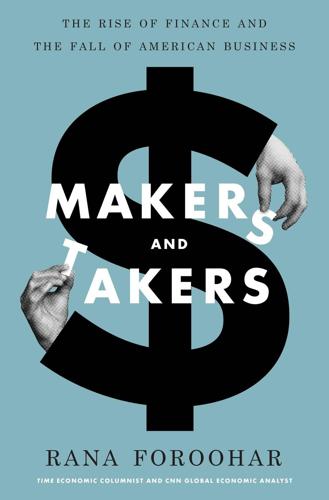
Makers and Takers: The Rise of Finance and the Fall of American Business
by
Rana Foroohar
Published 16 May 2016
THE LIFEBLOOD OF FINANCE Our shift to a system in which finance has become an end in and of itself, rather than a helpmeet for Main Street, has been facilitated by many changes within the financial services industry. One of them is a decrease in lending, and another is an increase in trading—particularly the kind of rapid-fire computerized trading that now makes up about half of all US stock market activity.13 The entire value of the New York Stock Exchange now turns over about once every nineteen months, a rate that has tripled since the 1970s.14 No wonder the size of the securities industry grew fivefold as a share of gross domestic product (GDP) between 1980 and mid-2000s while ordinary bank deposits shrunk from 70 to 50 percent of GDP.15 With the rise of the securities and trading portion of the industry came a rise in debt of all kinds, public and private.
…
Before the 1980s, banking was boring and not nearly as lucrative. But now PhDs who might once have crafted new engines at Boeing or come up with new polymers for Dow can make four to five times those former starting salaries at a hedge fund, where they can busy themselves creating twelve-dimensional computerized trading models. Eleven percent of the undergraduate class at MIT, for example, now goes to Wall Street, and despite the 2008 crisis, financial engineering is the fastest-growing field at many of the country’s best engineering schools.58 “Not only are these people not making scientific progress,” says Greg Smith, the former Goldman Sachs quantitative trader who famously published his resignation letter in the New York Times, “but the complex derivatives products they create are being sold to unsuspecting public pension funds and investors [who don’t know any better].
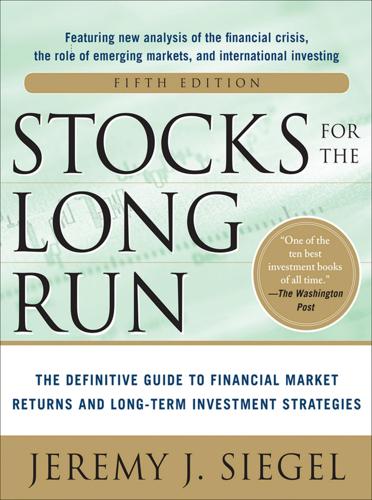
Stocks for the Long Run 5/E: the Definitive Guide to Financial Market Returns & Long-Term Investment Strategies
by
Jeremy Siegel
Published 7 Jan 2014
After the close, the NYSE, in consultation with the Financial Industry Regulatory Authority (FINRA), “broke,” or canceled, all trades that were 60 percent or more above or below their previous price. It is very likely that these extreme prices would not have been realized if specialists, those exchange representatives who maintained markets in assigned stocks before the advent of computerized trading, still controlled the flow of buy and sell orders. These specialists would have stepped in to buy these stocks at prices well above the absurdly low price they traded at. But most modern computerized trading systems were programmed to react very differently than the specialists would have. When prices begin to fall steeply, the programs are instructed to withdraw from the market. This is because large moves in individual stocks are almost always associated with company-specific news that computerized traders do not have access to.

A First-Class Catastrophe: The Road to Black Monday, the Worst Day in Wall Street History
by
Diana B. Henriques
Published 18 Sep 2017
Here, too, the CFTC had spent a lot of time and money battling fraud and abuse, without much to show for it. the CFTC backed off from enforcing its new audit trail standards: Sterngold, “Futures/Options: Role of the Floor Trader.” rather than automatically time-stamping them: This was called the “computerized trade reconstruction,” or CTR, system. It used prenumbered sequential trading cards and other bits of paperwork to “impute the one minute time of execution.” Its deficiencies would be widely exposed in a subsequent federal investigation. See Jerry W. Markham, “Prohibited Floor Trading Activities Under the Commodity Exchange Act,” Fordham Law Review 58, no. 1 (1989), pp. 15–17.
…
Schapiro, “Examining the Causes and Lessons of the May 6th Market Plunge,” Hearing Before the Securities, Insurance, and Investment Subcommittee of the House Committee on Banking, Housing, and Urban Affairs, 111th Congress, 2nd Sess., May 20, 2010, pp. 3-5.) On October 15, 2014, a similar and unprecedented “flash crash” hit the supposedly deep and efficient Treasury market; analysts later cited the runaway role of algorithm-driven computerized trading by giant institutional traders. (See “Joint Staff Report: The U.S. Treasury Market on October 15, 2014,” produced by the Treasury, the Federal Reserve, the Federal Reserve Bank of New York, the SEC and the CFTC, July 13, 2015.) And on August 24, 2015, the Dow index plunged a record 1,089 points at the opening bell, rebounded amid sharp gyrations, and then dropped right at the final bell to close down 6.6 percent, or 588 points; extreme volatility triggered market “circuit breakers” more than 1,200 times that day.
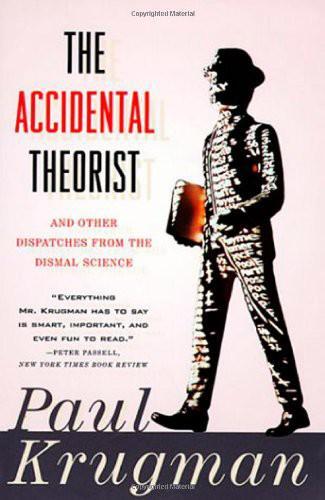
The Accidental Theorist: And Other Dispatches From the Dismal Science
by
Paul Krugman
Published 18 Feb 2010
Or at least that’s what George, Bob, and Madeleine told me to say. A Note on Currency Crises I often run into people who assert confidently that massive speculative attacks on currencies like the British pound in 1992, the Mexican peso in 1994–1995, and the Thai baht in 1997 prove that we are in a new world in which computerized trading, satellite hookups, and all that, mean that old economic rules, and conventional economic theory, no longer apply. (One physicist insisted that the economy has “gone nonlinear,” and is now governed by chaos theory.) But the truth is that currency crises are old hat; the travails of the French franc in the twenties were thoroughly modern, and the speculative attacks that brought down the Bretton Woods system of exchange rates in the early seventies were almost as big compared with the size of the economies involved as the biggest recent blowouts.
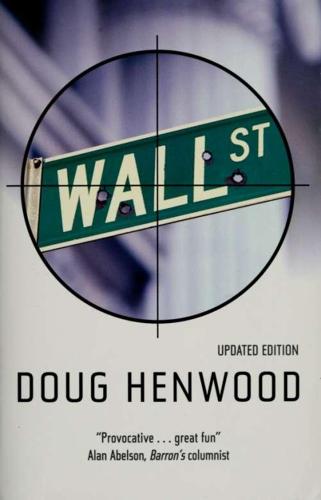
Wall Street: How It Works And for Whom
by
Doug Henwood
Published 30 Aug 1998
But it displays an understanding of finance apparently derived from capital's own publicists, like George Gilder, who celebrate the obsolescence of matter and the transcendence of all the old hostile relations of production. Cybertopians and other immaterialists are lost in a second- or even third-order fetishism, unable to decode the relations of power behind the disembodied ecstasies of computerized trading. And, on the other hand, lefties of all sorts — liberal, populist, and socialist — who haven't succumbed to vulgar postmodernism have continued the long tradition of beating up on finance, denouncing it as a stinkpot of parasitism, irrelevance, malignancy, and corruption, without providing much detail beyond that.
…
Another perspective on the market's labile temperament is the "volatility paradox," the enormous variations in volatility in stock prices (Shiller 1988; Schwert 1989). This volatility bears no statistical relation to the volatility of real-world phenomena like inflation, money growth, industrial production, interest rates, or business failures.^^ Moreover, despite the advent of computerized trading techniques such as portfolio insurance and index arbitrage during the 1980s, day-to-day volatility during that decade was little different from that of the 1970s, though both decades were more volatile than the 1950s and 1960s (Davis and White 1987). Schwert's data report stock volatility to have been low during times of great economic distress, like wars or the extended depression of the late 19th century, suggesting that in times of real social stress, people have more important things to worry about than their portfolios.
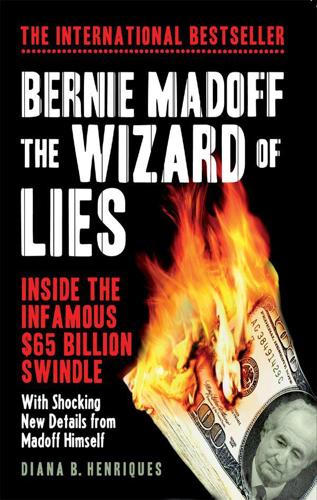
Bernie Madoff, the Wizard of Lies: Inside the Infamous $65 Billion Swindle
by
Diana B. Henriques
Published 1 Aug 2011
They set up elaborate charts that assessed fund performance against various benchmarks. They developed a formal checklist of questions to ask about a money manager’s operations—questions they put to Bernie Madoff when they tagged along on Tucker’s visits. Madoff or DiPascali would answer some of the questions, show them the fake records, perhaps even do a little phoney computerized trading in their account as they watched, and then show them the bogus clearinghouse statements that backed up what they had been told. Some questions Madoff simply refused to answer. In hindsight, his intransigence may seem like a blatant red flag, but at the time, given Madoff’s status in the financial industry and apparent success on Wall Street, it was all too convincing.
…
His firm’s trading desk handled hundreds of thousands of transactions a day from the nation’s biggest mutual fund companies, online brokers, and Wall Street trading desks. It seemed perfectly plausible that Madoff could step into that order flow, trading for his private clients ahead of market-moving orders to lock in foolproof profits. The SEC did not seem to realize that the split-second computerized trading networks Madoff had helped to create had made the illicit practice much harder to carry off. And since front-running was a crime that Madoff’s sons and brother were absolutely certain he was not committing, at least not on their trading desk, the regulators’ fixation was actually reassuring to those who thought they knew Bernie best.
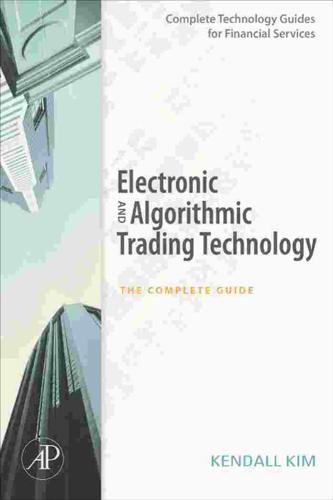
Electronic and Algorithmic Trading Technology: The Complete Guide
by
Kendall Kim
Published 31 May 2007
In the past, there were limited opportunities to apply technology to the trading process or interact directly with exchanges and market participants. This has all changed with the introduction of programs, direct market 1 2 Electronic and Algorithmic Trading Technology access, and algorithmic trading. Although automated trade flow can carry connotations of computerized trading taking over without human supervision, the actual decisions to buy and sell are made by people, not computers. Humans make the final trading decisions and the parameters behind implementing them, but computers may calculate algorithms that route the order flow efficiently and in many cases, computers help the breakdown of trades to each individual stock within the program. 1.2 The Emergence of Electronic Trading Networks Algorithmic trading has become another method for large brokerage firms to grasp an advantage over their competitors for lower-cost executions; however, smaller players such as agency brokers also see algorithms as a way to level the playing field and infringe on the bigger bulge-bracket firms.
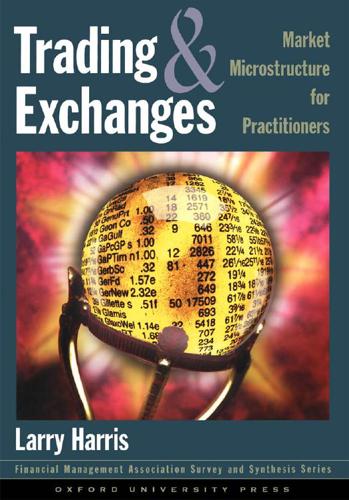
Trading and Exchanges: Market Microstructure for Practitioners
by
Larry Harris
Published 2 Jan 2003
The system designers therefore designed the system to ensure that all traders would receive a minimum quality of service regardless of where they are in the world. The issue is particularly important in computerized trading systems that allow their users to submit computer-generated orders. Computerized traders who can act most quickly on new information take advantage of market opportunities first. When two computerized trading systems employ the same trading strategies, the first to submit its orders will be the more profitable system. Since the difference in their submission times may be less than a millisecond, speedy connections are essential to trading successfully.
…
Large traders therefore prefer market structures that allow them to find traders willing to trade while minimizing the information they must expose to find these traders. * * * ▶ Order Exposure in Crossing Networks Electronic crossing networks, such as POSIT, allow large traders to avoid exposing their orders. These computerized trading systems take electronically transmitted orders and match them at prices determined elsewhere. The systems are completely confidential. They reveal only the aggregate sizes of the matches they have arranged. ◀ * * * Large traders also prefer markets that enforce strict time precedence rules in conjunction with an economically significant minimum price increment.
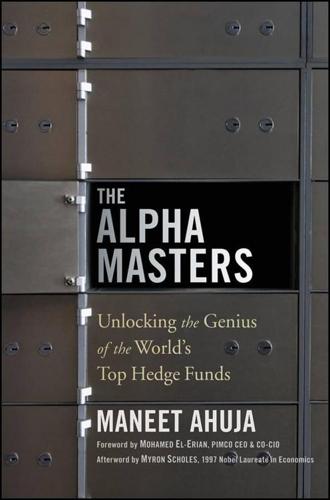
The Alpha Masters: Unlocking the Genius of the World's Top Hedge Funds
by
Maneet Ahuja
,
Myron Scholes
and
Mohamed El-Erian
Published 29 May 2012
Evidently—since 1990, AHL’s total returns have exceeded 1,000 percent. Still, AHL is hardly invulnerable. The financial crisis brought on a sharp reversal, and the firm remains vulnerable to the Fed-induced drop in market volatility. In response, says Wong, the company has developed “a number of computerized trading models designed to respond better in the current macro environment.” The fund’s 15 percent rebound last year substantiates this view, and Wong anticipates further growth” beyond its 2010 size of $22.6 billion. “I think that it is quite important to really understand the risk of your business and not overreact,” says Wong.
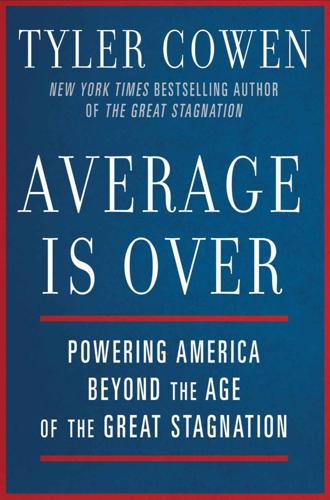
Average Is Over: Powering America Beyond the Age of the Great Stagnation
by
Tyler Cowen
Published 11 Sep 2013
There has been Steve Jobs, Mark Zuckerberg, and Bill Gates, but finance is a common source of riches within the very highest tier of earners. To give one extreme but illuminating example, in 2007 the top twenty-five hedge fund earners pulled in more income than all the CEOs of the S&P 500 put together. The modern financial sector has computers, computerized trading, arbitrage, super-rapid communications, and computerized risk assessment at its core. But don’t just focus on those computers; it’s also about management. The CEOs and higher-level managers are paid handsomely to assemble and direct the individuals who work every day with mechanized intelligent analysis.
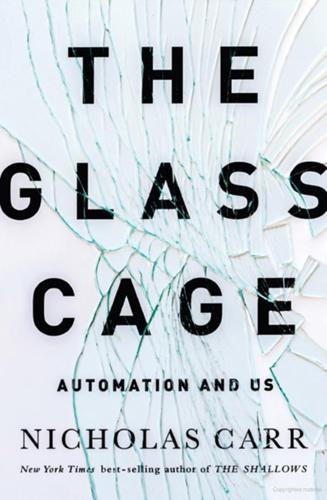
The Glass Cage: Automation and Us
by
Nicholas Carr
Published 28 Sep 2014
By diminishing the intensity of their thinking, the software retards their ability to encode information in memory, which makes them less likely to develop the rich tacit knowledge essential to true expertise.19 The drawbacks to automated decision aids can be subtle, but they have real consequences, particularly in fields where analytical errors have far-reaching repercussions. Miscalculations of risk, exacerbated by high-speed computerized trading programs, played a major role in the near meltdown of the world’s financial system in 2008. As Tufts University management professor Amar Bhidé has suggested, “robotic methods” of decision making led to a widespread “judgment deficit” among bankers and other Wall Street professionals.20 While it may be impossible to pin down the precise degree to which automation figured in the disaster, or in subsequent fiascos like the 2010 “flash crash” on U.S. exchanges, it seems prudent to take seriously any indication that a widely used technology may be diminishing the knowledge or clouding the judgment of people in sensitive jobs.
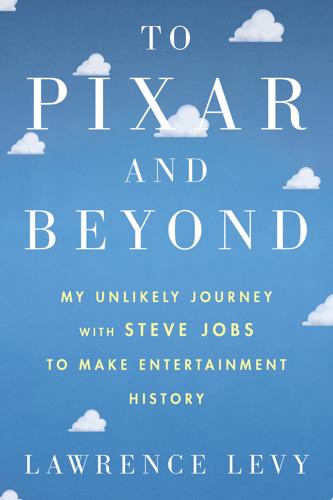
To Pixar and Beyond
by
Lawrence Levy
Excluding the four Disney blockbusters, the average opening weekend for animated feature films during the past five years was under $3 million. No matter how we measured it, we were reaching for the sky. The second number that would define Pixar’s future was the price at which Pixar’s stock would start trading as a public company. The moment Pixar went public, its stock would begin to trade on the NASDAQ stock exchange—a computerized trading system on which most Silicon Valley IPOs were launched. Of all the issues in Pixar’s public offering, there were none that occupied Steve’s thinking more than what Pixar’s stock would sell for when it first went public. The first stock price was the price at which Pixar sold stock to investors.
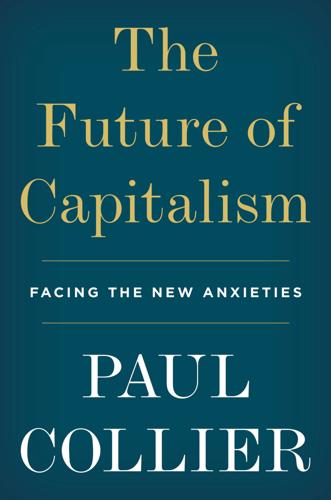
The Future of Capitalism: Facing the New Anxieties
by
Paul Collier
Published 4 Dec 2018
Given the potential benefits of gaining an informational advantage, there is constant pressure to get access to information. A company invested in a high-speed cable between Chicago and New York that skims milliseconds off the transmission of price information between the two markets.20 The commercial return on the investment depended upon this generating a tiny advantage in computerized trading, so that it could be sold to a few companies that would exploit it at the expense of those that received the same information milliseconds later. A society in which investment in such a cable is undertaken while bridges are left to collapse due to lack of maintenance has not got its priorities right.
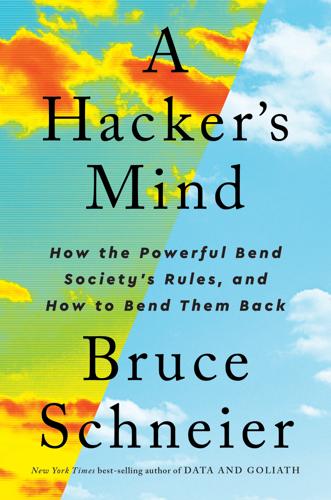
A Hacker's Mind: How the Powerful Bend Society's Rules, and How to Bend Them Back
by
Bruce Schneier
Published 7 Feb 2023
And while individual humans can contract with an HFT broker to have their own computer algorithms run for them, professional HFT traders will do it faster and better—to the disadvantage of others. HFT firms can pay extra to see pending orders a split second before the rest of the market does—another unfair advantage. Taking advantage of typos is yet another market hack that operates at computer speeds. Typos are not uncommon in computerized trading systems. The large failures make the news, like the time that a Japanese company, Mizuho Securities Co., lost $225 million on a stock trade when an employee accidentally made a “transposition error,” listing 610,000 shares at 1 yen apiece instead of one share for 610,000 yen. Or the time a junior trader at Deutsche Bank accidentally sent a hedge fund $6 billion in what’s known as a “fat-finger error.”
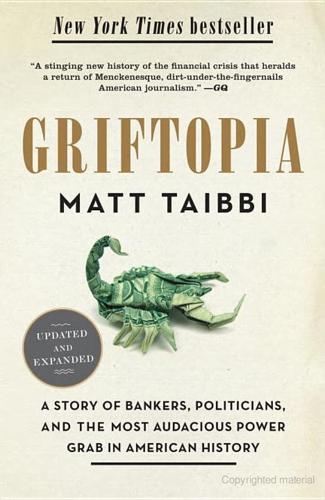
Griftopia: Bubble Machines, Vampire Squids, and the Long Con That Is Breaking America
by
Matt Taibbi
Published 15 Feb 2010
The NYSE memo reads: The purpose of this Information Memo is to advise all member organizations that the New York Stock Exchange LLC (“NYSE”) will be decommissioning the requirement to report program trading activity via the Daily Program Trading Report (“DPTR”), which was previously approved by the Securities and Exchange Commission (the “Commission”). The Zero Hedge war on Goldman became legend when his seemingly far-fetched conspiracy theories came sensationally true that summer. That’s when a Russian Goldman employee named Sergey Aleynikov was alleged to have stolen the bank’s computerized trading code. Aleynikov worked at precisely the desk Zero Hedge had accused of being involved in large-scale manipulations. And indeed, in a court proceeding after Aleynikov’s arrest, Assistant U.S. Attorney Joseph Facciponti reported that “the bank has raised the possibility that there is a danger that somebody who knew how to use this program could use it to manipulate markets in unfair ways.”
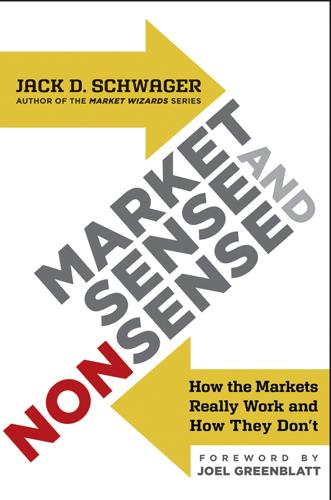
Market Sense and Nonsense
by
Jack D. Schwager
Published 5 Oct 2012
The key point is simply that the influence of emotions can lead to price behavior that is inconsistent with the efficient market hypothesis model. 17Although a segment of trading is run by computerized programs, this consideration does not alter the fact that a large portion of trading activity will reflect human decision making. Moreover, computerized programs are still subject to revisions and override, and thus even computerized trading can reflect human emotions. A classic example of this phenomenon was the meltdown of statistical arbitrage funds in August 2007. Statistical arbitrage is a market neutral, mean reversion strategy that uses mathematical models to identify short-term anomalies in stock movements, balancing sales of stocks witnessing upside deviations (as defined by its models) with purchases of stocks witnessing downside deviations.
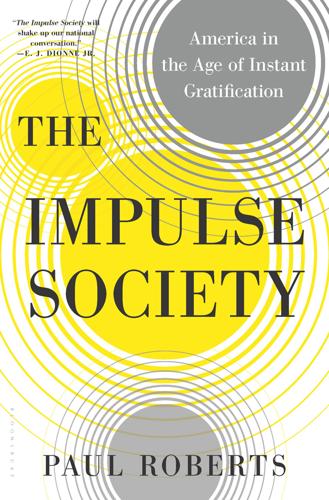
The Impulse Society: America in the Age of Instant Gratification
by
Paul Roberts
Published 1 Sep 2014
In the context of the Impulse Society, however, the more immediate effect of this cheap computing power was an acceleration in the realignment of the business world with the will of the shareholder. Wall Street would now become an even more ruthless enforcer of corporate efficiency. With computers and computer-aided data lines, brokers and investment bankers could monitor company performance in near-real time, analyze company data rapidly, and then, thanks to computerized trading, act on that data almost instantly. By the 1980s a company reporting unsatisfactory quarterly earnings might see its stock price fall within minutes, and soon, seconds. But computers also allowed companies to exploit more quickly the profit-making opportunities that Wall Street was demanding.

The Truth Machine: The Blockchain and the Future of Everything
by
Paul Vigna
and
Michael J. Casey
Published 27 Feb 2018
Confident that the scaling problems of blockchains will be resolved one way or another, he is convinced that open data and middleman-free blockchain-based asset markets will trend toward zero transaction costs for cross-trading in all securitized digital assets. He plans to deploy into that efficient market setting a network of high-speed, computerized trading machines. Much like Wall Street bond traders, these will “make markets” to bring financial liquidity to every countervailing pair of tokens—buying some here and selling others there—so that if anyone wants to trade 100 BATs for a third of a Jackson Pollock, they can be assured of a reasonable market price.
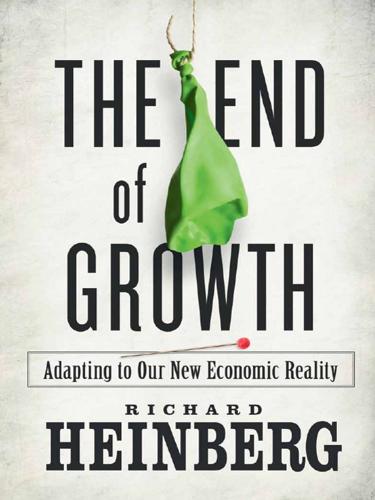
The End of Growth: Adapting to Our New Economic Reality
by
Richard Heinberg
Published 1 Jun 2011
Land equity partnerships and land trusts (including agricultural land trusts) are other proven ways to overcome the landlord-tenant dilemma and remove land from the speculative market.50 Futurist Hazel Henderson, author of Ethical Markets: Growing the Green Economy, advises governments to charge a financial transaction tax of one percent or less.51 This would not affect the trades of 99.9 percent of all Americans. But it would put a major crimp in the games that the big boys play. Let the quants use their brainpower to cure cancer rather than to craft complex computerized trading systems that leave society with less than nothing. A small transaction tax could generate over a $100 billion a year from Wall Street — and in the process, bring those ridiculous bonuses and profits back in line with the real economy.52 Henderson also advocates breaking up too-big-to-fail banks and businesses and fostering non-profit community development finance institutions (CDFIs) to address the capital needs of micro-businesses.

Living in a Material World: The Commodity Connection
by
Kevin Morrison
Published 15 Jul 2008
‘It was more like the present day hedge funds, as it went long and short and in the beginning it was focused on commodities futures as it was before interest rate or financial futures were launched,’ said Samuelson, who is credited with the famous quip ‘The stock market has predicted nine out of the last five recessions.’ Commodities Corporation was, in effect, one of the first commodity-focused hedge funds. Its successes were underlined further when another of its traders – Ed Seykota – developed one of the first computerized trading systems for managing clients’ money in futures markets (Schwager, 1993). The success of the company was to spot a good trader who could manage ‘leverage’; i.e. the amount of money a fund can borrow to fund its trade. The difference between then and now, adds Samuelson, is that there are a lot more smart people today.

Capital Ideas Evolving
by
Peter L. Bernstein
Published 3 May 2007
Since Capital Ideas appeared in 1992, the institutional structure of financial markets has gone through a fundamental transformation. Investors in the early 1990s had not even a glimmer of today’s f lood of information by means of the computer and the Internet; the instruments bern_c04.qxd 3/23/07 9:02 AM Page 49 Robert C. Merton 49 being traded; the reality of computerized trading in place of exchange f loors; the management of the stock exchanges themselves; the global interlocks; the size, sophistication, and orientation of the larger investors; the proliferation of money market funds, mutual funds, and hedge funds; the development of risk-sharing instruments blurring distinction between the commercial banks or insurance companies and the capital markets; or the transformation of pension funding from defined-benefit to defined-contribution.

A World Without Work: Technology, Automation, and How We Should Respond
by
Daniel Susskind
Published 14 Jan 2020
These tailor instruction—the content, the approach, and the pace—to the particular needs of each student, in an effort to replicate the one-to-one personal tuition that is provided at a place like Oxford but unaffordable in most other settings. More than seventy companies are developing these systems, and 97 percent of US school districts have invested in them in some form.47 The list goes on and on. In finance, computerized trading is now widespread, responsible for about half of all trades on the stock market.48 In insurance, a Japanese firm called Fukoku Mutual Life Insurance has started using an AI system to calculate policyholder payouts, replacing thirty-four staff in the process.49 In botany, an algorithm trained on more than 250,000 scans of dried plants was able to identity species in new scans with almost 80 percent accuracy; one paleobotanist, reviewing the results, thought the system “probably out-performs a human taxonomist by quite a bit.”50 In journalism, the Associated Press has begun to use algorithms to compose their sports coverage and earnings reports, now producing about fifteen times as many of the latter as when they relied upon human writers alone.
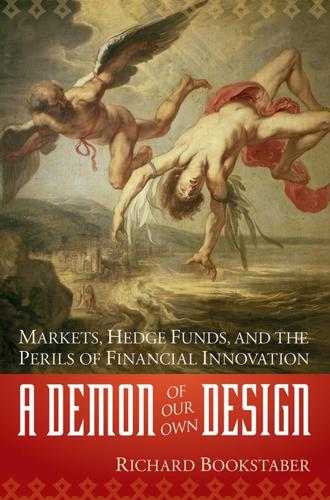
A Demon of Our Own Design: Markets, Hedge Funds, and the Perils of Financial Innovation
by
Richard Bookstaber
Published 5 Apr 2007
He started from scratch, plugging away on the SAS statistics package to build his approach. Peter’s first months of trading at Morgan Stanley were rocky; he was one month from being shut down, but then he hit his stride, beginning a streak of years of profits with nary a month of down performance. The computerized trading pulled in hundreds of millions a year for the firm and tens of millions for Muller, and the system was sufficiently automated that he could leave the day-to-day administration to his staff while he indulged in his other interests—performing his songs at New York clubs and kayaking in Ecuador—before finally retiring from the firm in 2001.
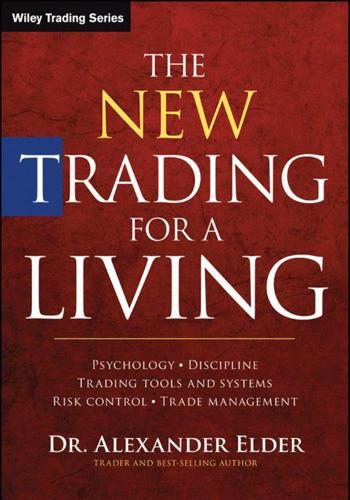
The New Trading for a Living: Psychology, Discipline, Trading Tools and Systems, Risk Control, Trade Management
by
Alexander Elder
Published 28 Sep 2014
Many have a fantasy that successful traders have some secret knowledge. That fantasy helps support a lively market in advisory services and ready-made trading systems. A demoralized trader may whip out his credit card to buy access to “trading secrets.” He may send money to a charlatan for a $3,000 “can't miss,” backtested, computerized trading system. When that system self-destructs, he'll pull out his almost-maxed-out credit card again for a “scientific manual” that explains how he can stop losing and begin winning by contemplating the moon, the stars, or even Uranus. At an investment club we used to have in New York, I often ran into a famous financial astrologer.
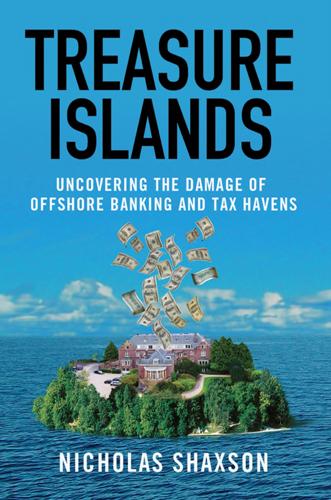
Treasure Islands: Uncovering the Damage of Offshore Banking and Tax Havens
by
Nicholas Shaxson
Published 11 Apr 2011
One enterprising trader at a major U.S. bank, recognizing how artificial this game was, planted a cardboard sign saying “Nassau” on a desk in his trading room in New York and recorded trades at that desk, booking them “offshore” and out of sight of regulators. After someone discovered the ploy the traders continued as before but ensured that a clerk simply copied them into a second set of books in the Bahamas.50 Soon, a shift to computerized trading removed the need for cardboard signs anyway. As the author Jeffrey Robinson noted, “The horse hadn’t merely bolted, it was living in a beach-front condo in the Caribbean.” The Euromarkets rippled outward, driven from the center in London, first to Britain’s semi-independent Crown Dependencies of Jersey, Guernsey, and the Isle of Man near the UK mainland, then out to the British-held Caribbean jurisdictions, then to Asia, and finally to British-held Pacific atolls.
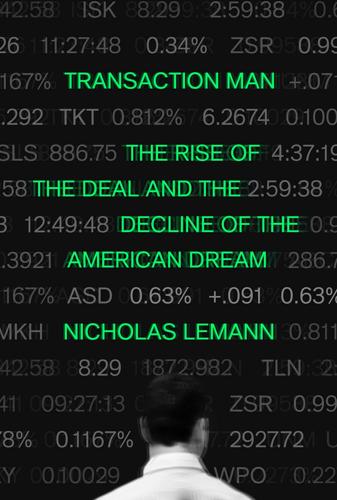
Transaction Man: The Rise of the Deal and the Decline of the American Dream
by
Nicholas Lemann
Published 9 Sep 2019
In the late 1980s that began to change. On October 19, 1987, financial markets around the world plunged more in one day than they ever had before, even during the crash of 1929, at least partly because large institutional investors had adopted some of the techniques of financial economics, such as automated, computerized trading that proceeded almost instantly in response to complex calculations about the direction of the markets, without any human participation in the decisions to buy or sell. During the same period, more than a thousand savings and loans—a third of the total number in the country—failed, substantially because the deregulation of a few years earlier had permitted them to make highly risky investments that had gone sour.

The City on the Thames
by
Simon Jenkins
Published 31 Aug 2020
Though there was an immediate loss of jobs in traditional banking, incoming firms led to rents in the City shooting up by 52 per cent between 1985 and 1989. Canary Wharf itself was rescued by a Qatari sovereign wealth fund, while foreign banks lapped up the Wharf’s cheap accommodation. They did not care where Poplar was, so long as it had a computerized trading floor, no taxes and no meddlesome government. By the end of the 1990s, the Isle of Dogs was employing 50,000 people, with its own new residential quarter spreading along the banks of the Thames. Seen from the island’s urban farm, the Mudchute, a mile to the south, the Wharf’s towers rose eerily over grazing sheep and llamas, like a film set in Dubai.
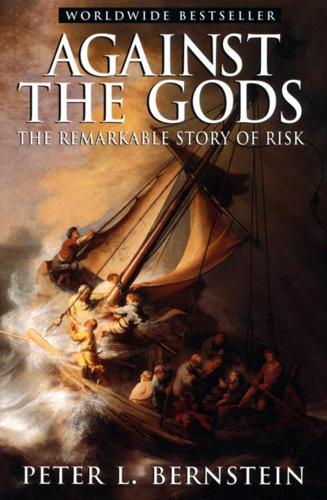
Against the Gods: The Remarkable Story of Risk
by
Peter L. Bernstein
Published 23 Aug 1996
So far, computer mod els that instruct the investor to buy when others are frightened and to sell when others are overconfident have produced mixed or irregular results. The investors become either more frightened or more overconfident than the computer model predicts, or else their behavior is outside the patterns the computer can recognize. Yet computerized trading is a fruitful area for further research, as we shall see shortly. Human investors do turn in outstanding track records from time to time. But even if we ascribe those achievements to skill rather than luck, two problems remain. First, past performance is a frail guide to the future. In retrospect, the winners are fully visible, but we have no reliable way of identifying in advance the investors whose skills will win out in the years ahead.

The Spider Network: The Wild Story of a Math Genius, a Gang of Backstabbing Bankers, and One of the Greatest Scams in Financial History
by
David Enrich
Published 21 Mar 2017
Hayes rented a place in London and commuted into UBS’s offices, right around the corner from the old Mullens building where his top-hatted grandfather once worked. (In fact, S. G. Warburg, which had been purchased by UBS, had itself purchased Mullens in the 1980s.) Hayes found the job boring. He worked behind the scenes, helping UBS manage its technology and computerized trading systems. At the end of the summer, the bank offered him a permanent job. It wasn’t even conditioned on Hayes graduating—that’s how much they wanted him. But in his few months at UBS, Hayes had learned about the investment banking pecking order. Back-office roles, such as the one he’d been offered, were close to the bottom.

Traders, Guns & Money: Knowns and Unknowns in the Dazzling World of Derivatives
by
Satyajit Das
Published 15 Nov 2006
Ganging up is effective – you just get together with other traders and fall upon a weakened animal like hyenas or wolves. Ambush is also good – you know something that the other guy does not know, at least not yet. Flow traders are well-versed in ambush. It also helps to be lucky – better to be a lucky fool than an unlucky genius. I was consulting to an equity house and the project focused on a new computerized trading system. A trader records the trades done in order to work out what their position is, traditionally done manually on a large piece of paper (the blotter). The proposed system had an electronic version of the blotter; trades were entered into the system, creating the blotter for each trader.
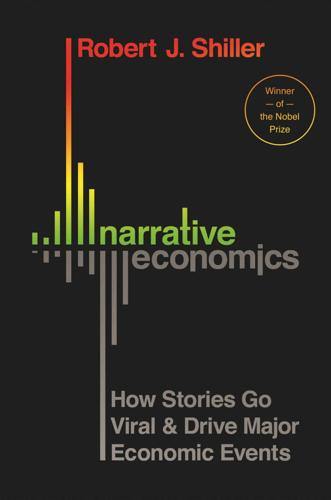
Narrative Economics: How Stories Go Viral and Drive Major Economic Events
by
Robert J. Shiller
Published 14 Oct 2019
We might believe that memories of that crash make stock markets vulnerable to another crash, because fear of a crash may cause people to react to the apparent beginnings of a drop in stock prices. But the narrative of the 1987 crash need not have any such effect if people do not think current circumstances are similar. In 1987, there was much discussion of a new computerized trading program called portfolio insurance. Along with other factors, narratives about portfolio insurance led to a predisposition to consider selling that was peculiar to that time.5 Other disturbing stock market events were surrounded by narratives that had nothing to do with portfolio insurance.
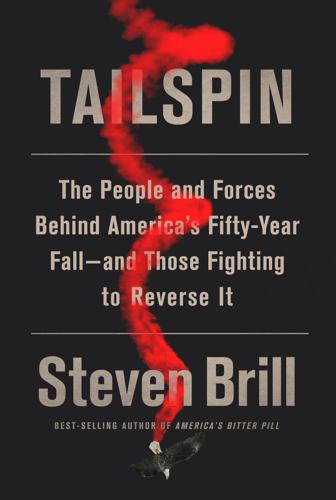
Tailspin: The People and Forces Behind America's Fifty-Year Fall--And Those Fighting to Reverse It
by
Steven Brill
Published 28 May 2018
This raises the core question: Is a corporate board supposed to bow to the day-to-day wishes of shareholders, or should it act in what the corporation’s leaders believe is the company’s best long-term interests, or even in the best interests of all stakeholders—shareholders, employees, consumers, suppliers, and the community as a whole? That stakeholder view seems to be making a comeback. Barton and many other business leaders are increasingly taking up the cause. And with the political climate turning against the kind of short-termism that computerized trading, hedge fund raids, and buybacks have exacerbated, regulatory reforms may become possible within a few election cycles. These include disallowing favorable capital gains tax treatment on stock sold within, say, three years of its purchase; putting an extra tax on computerized split-second trading in stocks, bonds, and currencies; limiting the power of raiders and fast-trading hedge funds by giving more weight in voting to shareholders who hold stock for a stipulated length of time, such as one or two years; and once again not allowing stock buybacks—a Reagan-era deregulatory experiment that has clearly been bad for the overall economy.

The Oil and the Glory: The Pursuit of Empire and Fortune on the Caspian Sea
by
Steve Levine
Published 23 Oct 2007
On a subsequent visit, they were told that privatization would proceed after the elections in October 1998, when Aliyev would be better positioned to enact the controversial reform. Kozeny’s flashy presence in Baku impressed his visitors. He cruised the city in an armored jeep with bodyguards and spent freely in pricey restaurants. He rented two floors in an expensive office building, where he established an investment house called Minaret, complete with a computerized “trading floor,” even though Baku as yet had no stock market. His 180-person staff was well paid and treated royally at his luxury seaside dacha. In April 1998, Kozeny celebrated Minaret’s formal opening with a poolside soirée at Baku’s premier hotel, the Hyatt. George Mitchell was the marquee guest.
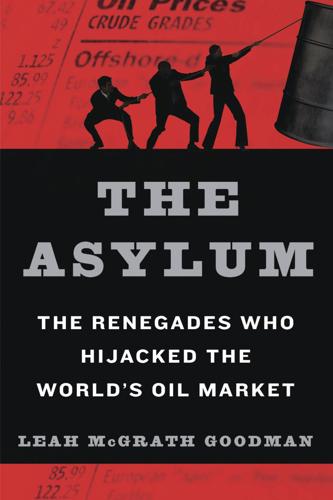
The Asylum: The Renegades Who Hijacked the World's Oil Market
by
Leah McGrath Goodman
Published 15 Feb 2011
Banks and hedge funds, whose automated trading systems bought and sold millions upon millions of energy contracts in just milliseconds, followed the same credo. Computer programmers were being hailed as the new gunslingers of Wall Street, fetching breathtaking salaries. Veteran energy traders began reporting that some of the computerized trading systems were letting banks and funds trade on the screen in ways that would have been illegal in the pits. They pointed to what they called “phantom trading volume,” “fake orders,” and “quote-stuffing” that made oil prices appear to be headed one way when they were really headed another. It was a problem worth looking into, but with Washington’s track record of understanding even the most basic financial instruments, like weather futures, it seemed unlikely it would be capable of troubleshooting advanced technology possibly being repurposed for the execution of illicit, high-speed trades.
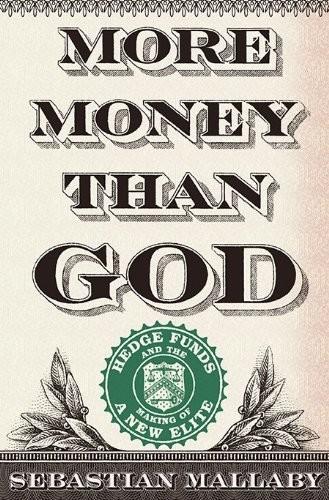
More Money Than God: Hedge Funds and the Making of a New Elite
by
Sebastian Mallaby
Published 9 Jun 2010
A first version of his program, a trend-following system called Techno-Fundamentals, ran money successfully from the end of 1997, but the job of creating a system that would shift according to the market environment remained uncompleted. Wadhwani returned to the task when he set up his own hedge fund, Wadhwani Asset Management, in London in 2002, and meanwhile, Tudor’s program trading continued to develop. By 2008 Paul Jones’s firm had more than fifty people working on its computerized trading, and their algorithms were driving more than $3 billion of Tudor’s $17 billion capital.18 The rock-and-roller with the Bruce Willis sneakers had accomplished quite a transformation. And yet, just as with D. E. Shaw, there were limits to this achievement. The systems that Tudor created were not as original as those developed by James Simons’s team at Renaissance Technologies.
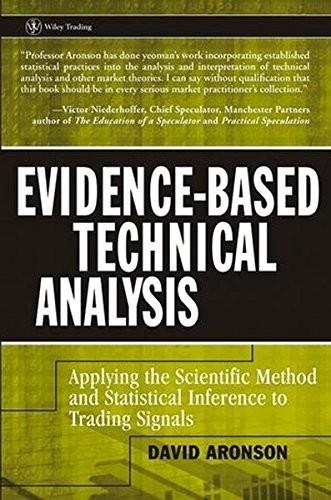
Evidence-Based Technical Analysis: Applying the Scientific Method and Statistical Inference to Trading Signals
by
David Aronson
Published 1 Nov 2006
A rule selected because of its superior performance in the mined data. This figure was inspired by a similar figure in Lawrence Lapin, Statistics for Modern Business Decisions, 2nd ed. (New York: Harcourt Brace Jovanovich, 1978), Figure 6-10, 186. Pardo, Design, Testing and Optimization, 108. M. De La Maza, “Backtesting,” Chapter 8 in Computerized Trading: Maximizing Day Trading and Overnight Profit, M. Jurik (Ed.) (Paramus, NJ: Prentice-Hall, 1999). Katz and McCormick, Encyclopedia of Trading Strategies. Kaufman, New Trading Systems. P.-H. Hsu and C.-M. Kuan, “Rexamining the Profitability of Technical Analysis with Data Snooping Checks,” Journal of Financial Econometrics 3, no. 4 (2005), 606–628.

Adaptive Markets: Financial Evolution at the Speed of Thought
by
Andrew W. Lo
Published 3 Apr 2017
After the third call, I realized that something significant was occurring on Wall Street, something that was off the radar of academic theory or hedge fund practice. I knew all three alumni were working at hedge funds engaged in the same broad category of strategies known as “statistical arbitrage,” or “statarb” for short—highly sophisticated quantitative algorithms and computerized trading platforms involving long and short positions in hundreds of stocks. These were the same kinds of strategies used by Morgan Stanley and D. E. Shaw in the 1980s (see chapter 7). This seemed like too much of a coincidence. And the fact that these three were calling up their former finance professor to ask about what’s going on in the industry suggested that they must have been really desperate for information!
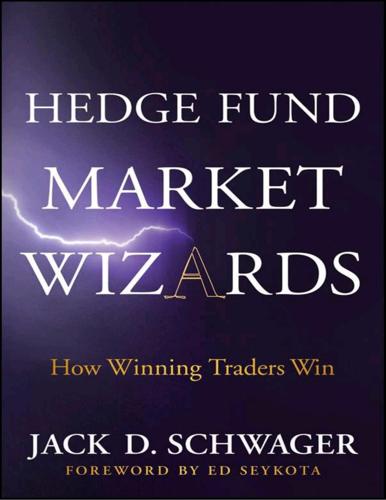
Hedge Fund Market Wizards
by
Jack D. Schwager
Published 24 Apr 2012
Woodriff had looked forward to our meeting and was extremely disappointed that he had come down with a bad cold a day earlier. He repeatedly apologized for what he considered his foggy thinking and imprecise recollections. “God, I wish I weren’t sick. I’m not thinking clearly,” he said.4 How did you get interested in developing computerized trading systems? When I was about 9 or 10 years old, I became interested in odds and probability. I would obsessively roll a pair of dice to see seven win, and six and eight duke it out. It just fascinated me to see the results come out over time—to see the randomness, but also the certainty with which seven would always beat six and eight.
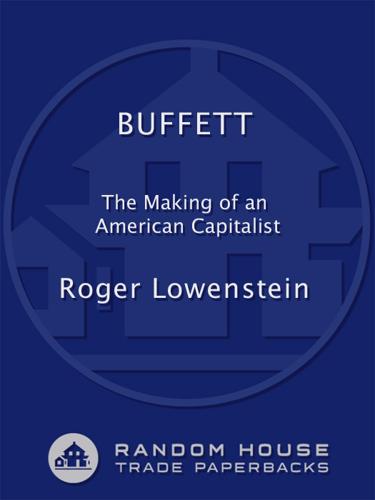
Buffett
by
Roger Lowenstein
Published 24 Jul 2013
Business Week suggested that “yesterday’s yardsticks” were no longer apt.37 Buffett felt that money managers were not using any yardstick. They had abandoned the effort to value stocks at all: “For them, stocks are merely tokens in a game, like the thimble and flatiron in Monopoly.”38 With computerized trading, fund managers were now buying groups of stocks by the bucketful in market “baskets”—a few million GM, a couple of million AT&T, and a dab of Westinghouse, on rye, please. A parallel trend was the emergence of stock-index futures in the commodity pits in Chicago. These new futures contracts, which traded next to pork bellies and cattle, enabled speculators to bet on the direction of the entire stock market.

The Rise of the Network Society
by
Manuel Castells
Published 31 Aug 1996
However, in a long personal conversation, after reading the draft of my analysis, he did not disagree with my interpretation of the project of an “architecture of nudity,” although he conceived it rather as an innovative attempt to bring together high-tech and classic design. We both agreed that the new architectural monuments of our epoch are likely to be built as “communication exchangers” (airports, train stations, intermodal transfer areas, telecommunication infrastructures, harbors, and computerized trading centers). 86 For a useful debate on the matter, see Lillyman et al. (1994). 87 Castells (1972: 496ff). 88 For an updated social and spatial, illustrated history of Belleville, see the delightful book by Morier (1994); on urban renewal in Paris in the 1970s, see Godard et al. (1973). 89 Boyer (1994). 90 Jacobs (1993). 91 Machimura (1995: 16).
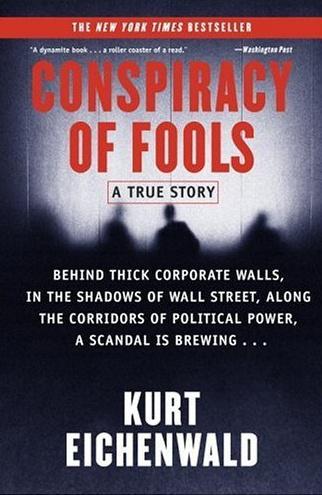
Conspiracy of Fools: A True Story
by
Kurt Eichenwald
Published 14 Mar 2005
An airliner had just struck the World Trade Center. It was the morning of September 11. The terrified voices from New York echoed through the Enron trading floor. One Enron trader had been on the line with Cantor Fitzgerald, based on the upper floors of One World Trade Center, when the first plane hit. The firm operated a computerized trading-reporting system used by trading desks, including at Enron, and now their screens had gone blank. “The building’s burning,” one trader on the line said. “We’re supposed to get out. But I don’t think we can.” Eventually the voices disappeared, and the Enron traders watched in horror as the two towers collapsed—first Tower Two, then, not long after, Tower One, where the people they had just been speaking with had been trapped.
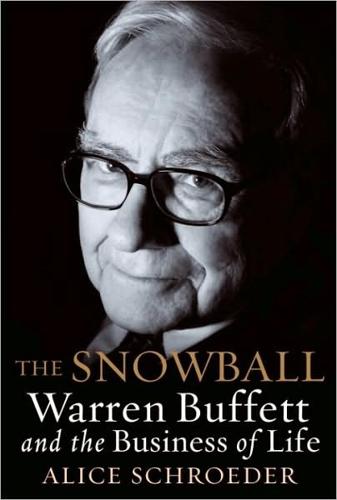
The Snowball: Warren Buffett and the Business of Life
by
Alice Schroeder
Published 1 Sep 2008
Finally it became obvious even to computer-averse Buffett that to trade bonds you had to have a Bloomberg terminal. But the Bloomberg sat some distance from Buffett’s office and he never looked at it; that was the job of Mark Millard, the bond trader.10 The advent of the Bloomberg terminal, symbol of the new computerized trading, mirrored the ongoing struggle over Salomon’s identity, which continued within the firm. Its laggard businesses had never gotten back on their feet. In 1994, Maughan had tried to realign pay at Salomon on the theory that employees should shoulder the same risk as shareholders. When times were good, they would get bonuses, but when times were bad, they would suffer as well.
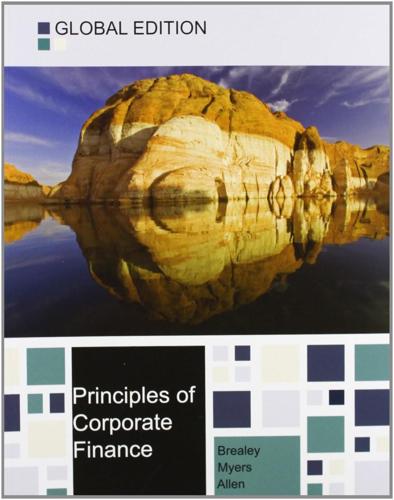
Principles of Corporate Finance
by
Richard A. Brealey
,
Stewart C. Myers
and
Franklin Allen
Published 15 Feb 2014
For example, you may wish to calculate two figures, one on the assumption that the opportunity for further profitable investment disappears after six years and another assuming it disappears after eight years. 2. How much of your estimate of the value of Bok’s stock comes from the present value of growth opportunities? ___________ 1Trades are still made face to face on the floor of the NYSE, but computerized trading is taking over. In 2006 the NYSE merged with Archipelago, an electronic trading system, and transformed itself into a public corporation. The following year it merged with Euronext, an electronic trading system in Europe, and changed its name to NYSE Euronext. 2Other good sources of trading data are moneycentral.msn.com or the online edition of The Wall Street Journal at www.wsj.com (look for the “Market” and then “Market Data” tabs). 3Yahoo!